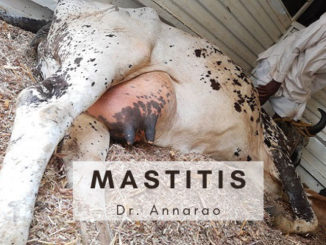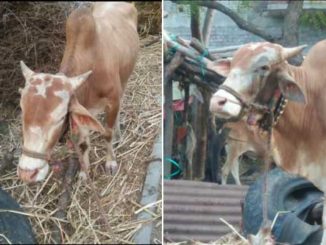Among infertility cases the incidence of repeat breeding cows was around 16 per cent and contribution of subclinical endometritis is major proportion in repeat breeding cows. Cows that are cycling normally, with no clinical abnormalities, which have failed to conceive after at least two successive inseminations.
In practice, some will have been inseminated at the wrong time, others may have pathological changes in the bursa or oviduct that are difficult to palpate, or undiagnosed uterine infections.

Repeat breeders can be divided into two groups:
- Early repeats
Cows that come into heat within 17-24 days after AI. In these animals the luteal function has been shorter than normal or typical for the physiological oestrus cycle in non bred cow. In these cows the most probable event is either failure of fertilisation (delayed ovulation, poor semen quality etc.) or early embryonic death (delayed ovulation, poor embryo quality, unfavourable uterine environment, precocious luteolysis) - Late repeats
Cows that come into heat later than 25 days after AI. In these animals the luteal function was maintained for longer than the physiological luteal phase in non bred cows. Fertilisation and initial recognition of pregnancy probably took place but for some reason (inadequate luteal function, inadequate embryo signalling, infectious diseases, induced luteolysis) luteolysis was induced and pregnancy loss.
A six years old pluriparous crossbred Jersey cow weighing about 280 kg was presented to Large Animal Gynaecology unit of VCRI Orathanadu with the history of non conception even after consecutive inseminations five times. The owner also added that the animal was showing estrous signs with clear vaginal discharge since last day evening. On clinical examination the animal was normal with clear vaginal discharge. On rectal examination the external os of the cervix was relaxed with intense uterine tone. In addition to that, no palpable abnormality could be detected. As a diagnostic approach, the cervical mucus was collected aseptically and subjected to Whiteside test and positive for subclinical endometritis. The case was diagnosed as repeat breeder due to sub-clinical endometritis. Hence the animal was treated with intra-uterine and parenteral antibiotic for three days. The owner was advised to skip the insemination in the subsequent cycle and review in mid of that cycle. On successive review the animal was inserted with controlled Internal Drug Release (CIDR) in vagina for the period of nine days with administration of Prostaglandin on day 8. Luteinizing hormone was administered on Day 11 and fixed time artificial inseminations were done periodically and ovulation was ensured. The pregnancy was confirmed on day 23 by ultrasonography. It could be concluded that progesterone treatment with fixed time artificial insemination would be the successful approach for repeat breeding cows.
|
The content of the articles are accurate and true to the best of the author’s knowledge. It is not meant to substitute for diagnosis, prognosis, treatment, prescription, or formal and individualized advice from a veterinary medical professional. Animals exhibiting signs and symptoms of distress should be seen by a veterinarian immediately. |






Be the first to comment